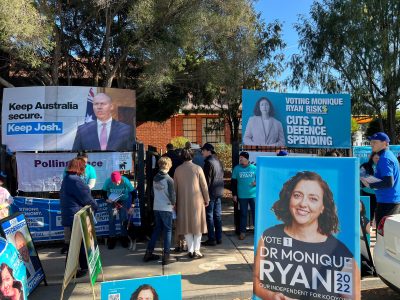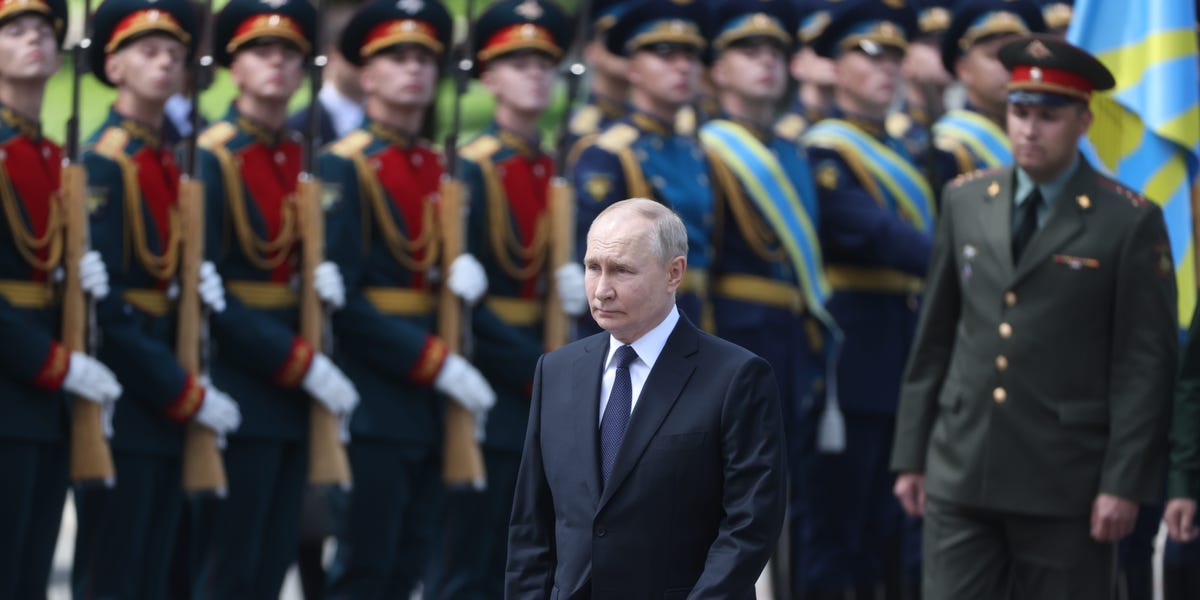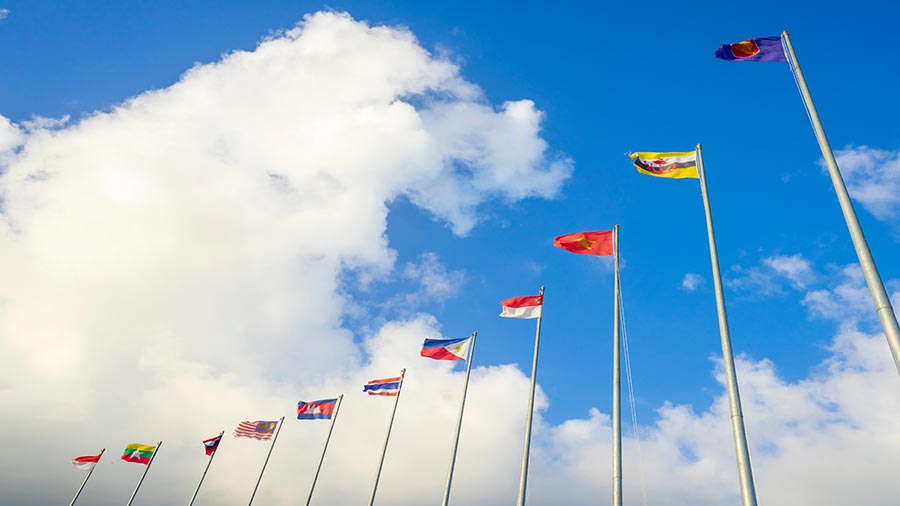China
Is WeChat’s threat to Australian elections overstated?

Author: Fan Yang, Deakin University
The 2019 Australian federal election was the first time that Australian politicians interacted with Mandarin speakers on the Chinese social media platform WeChat. The two major party leaders at the time — Scott Morrison of the Liberal-National Party (LNP) and Bill Shorten of the Australian Labor Party (ALP) — joined WeChat Official Accounts (WOAs) to give public announcements and conduct online video meetings as part of their election campaigns.
Concerns were raised about the possibility of Beijing’s influence in swinging the opinion of Chinese-speaking voters towards the party that maintained more moderate policies toward China. These fears came as no surprise — from 2020 onwards, Chinese-owned apps like WeChat and TikTok have faced public disputes, boycotts and parliamentary inquiries into issues of foreign interference, censorship and cybersecurity.
After Morrison’s WOA ‘went missing’ in 2022, Liberal members of parliament, including James Paterson and Gladys Liu, pledged to boycott WeChat. The 2022 elections saw the LNP increasingly politicising WeChat in the name of countering foreign interference, inflaming anti-China sentiments for political gain.
The incorporation of WeChat into politicians’ 2022 federal election campaigns became not only instrumental, but also divisive. In 2022, more LNP, ALP and independent politicians joined WeChat to promote their policies. But engagement with Chinese migrants on WeChat mostly remained one-way, with political communication largely terminated after the election.
While certain groups of LNP politicians shunned WeChat, others such as Josh Frydenberg and Paul Fletcher invested significantly in political advertising across several influential WOAs. Prime Minister Anthony Albanese and ALP member Clare O’Neil used WeChat to update Chinese voters on political announcements and ALP policies. Teal candidates Kylea Tink and Fuxin Li also participated on WeChat.
The significance of WeChat in political communications has also been highlighted in Australia’s state elections. In 2022, the then Victorian Liberal leader Matthew Guy initiated a series of political advertisements on WeChat ahead of the state election. In the leadup to the NSW state election in 2023, NSW Labor leader Chris Minns embarked on political campaigns using influential Sydney-based WOAs.
Political campaigns on WeChat are under-supervised by the platform and the Australian Electoral Commission. Although WeChat has clarified that the platform prohibits political campaigns, business-oriented and self-sponsored WOAs continue to publish political advertisements on behalf of Australian politicians, bypassing the platform’s regulations. In 2022, the Australian Electoral Commission groundbreakingly commissioned influential WOAs to publish educational materials about identifying disinformation.
Though politicians’ engagement on WeChat is vital in filling the gap between Mandarin-speaking migrants and the Australian political sphere, consistent engagement from politicians is lacking and the risks of using Chinese technologies remain. Resources invested in monitoring disinformation on WeChat are deficient, especially ahead of national or state elections. As Chinese language political commentaries by commercial WOAs are one of the major sources for Mandarin speakers to understand Australian politics, there is the possibility of misinformation or disinformation driven by commercial imperatives and non-professional translations.
Since 2023, scrutiny over Chinese-made technologies — from social media, digital devices and smart home appliances to commercial drones and urban infrastructure — is being further escalated by Labor government national initiatives to counter foreign interference. Concerns about WeChat are realistic and the app could bring various risks to Australia in the future. With Beijing having assumed more restrictive controls over the country’s tech industry since 2021, political interests are on par with commercial imperatives for Chinese tech companies.
Despite fears of foreign interference, our study — which monitored multiple rounds of Australian federal and state elections — has not yet identified alleged ‘Chinese influence’ across WOAs. Our assessment of Beijing’s influence is based on the number of China-sponsored articles that show a strong preference towards a particular candidate, which was apparent in the 2022 Hong Kong Chief Executive election.
During the 2019 and 2022 Australian elections, WOAs run by Chinese state…
Business
Russia’s Booming Economy is Straining a Vital Trading Route with China

Russia’s railway industry is experiencing a significant downturn, with a nearly 30% investment cut and a 5% freight volume decline, complicating trade with China amidst the economic impacts of the Ukraine war.
Downward Trend in Russia’s Railway Industry
Russia’s railway industry is currently experiencing a significant downturn, largely due to the impacts of the ongoing conflict in Ukraine. According to MMI Research, this sector is facing its biggest slowdown since the Great Financial Crisis, with freight volumes dropping by 5% in the first 11 months of 2024. The war-driven economy has hindered trade, particularly with China, which heavily relies on rail transport.
Investment Cuts and Economic Consequences
Investment in Russia’s railways is set to decrease by almost 30% next year, dropping to 890 billion rubles (approximately $8.5 billion). This reduction is attributed to high interest rates, currently at a record 21%, which further complicate financing options. The state-owned Russian Railways is reconsidering future investments, indicating potential cuts by another third through 2030.
Challenges Affecting Trade with China
The decline in rail capacity poses significant challenges for Russia’s trade with China. As Western sanctions push Russia to diversify its trade routes, rail transport has become increasingly vital for moving goods. However, supply bottlenecks, exacerbated by the need to transport war-related materials, threaten to disrupt this crucial trading relationship further.
Source : Russia’s overheated economy is squeezing one of Moscow’s key trading channels with China
Business
Democrat Claims Musk is Undermining Spending Bill Due to China Restrictions – The Hill

A Democrat claims Elon Musk influenced the reduction of a spending bill due to its restrictions on China, suggesting his actions impacted the legislation’s progress and funding allocation.
Allegations Against Musk
A prominent Democrat has accused Elon Musk of deliberately sabotaging a significant spending bill in response to China-related restrictions. This accusation comes amid ongoing tensions between the U.S. and China, particularly regarding technology and trade policies. The claims suggest that Musk’s influence is affecting critical legislative processes, raising concerns among lawmakers about foreign influence in American politics.
Implications for Legislation
The potential ramifications of Musk’s alleged actions could be significant. As a major player in the tech industry, his decisions can sway public opinion and impact the economy. Lawmakers fear that if influential figures like Musk oppose necessary legislation, it might hinder efforts to address vital issues such as national security and economic stability.
Political Reactions
The controversy has sparked debates among both Democrats and Republicans, highlighting the intersection of technology and politics. Many are demanding greater transparency and accountability from tech giants. As the situation unfolds, lawmakers may need to reassess their strategies to ensure that essential legislation moves forward uninterrupted.
Source : Democrat accuses Musk of tanking spending bill over China restrictions – The Hill
China
Dissolving a Company in China: A Comparison of General Deregistration and Simplified Deregistration

China promotes simplified deregistration to enhance its business environment, offering a faster process requiring fewer documents than general deregistration. Companies must meet eligibility criteria, resolve issues, and can choose procedures based on their situation, ensuring compliance for both options.
In addition to the general deregistration procedures, China has been promoting simplified deregistration as one of the key measures to enhance its business environment. This article highlights the differences between the general and simplified procedures, explains the eligibility criteria, and clarifies common misunderstandings about these processes.
Foreign investors may decide to close their business for multiple reasons. To legally wind up a business, investors must complete a series of procedures involving multiple government agencies, such as market regulatory bureaus, foreign exchange administrations, customs, tax authorities, banking regulators, and others. In this article, we outline the company deregistration process overseen by the local Administration for Market Regulation (AMR), comparing the general and simplified procedures.
Before 2016, companies could only deregister through the general procedure. However, on December 26, 2016, the Guidance on Fully Promoting the Reform of Simplified Company Deregistration Procedures was released. Effective March 1, 2017, simplified deregistration procedures were implemented nationwide. Since then, there have been two options: general procedures and simplified procedures.
Companies must follow the general deregistration process if any of the following conditions apply (hereinafter referred to as “existing issues”):
Companies not facing the above issues may choose either the general or simplified deregistration process.
In summary, simplified deregistration is a faster process and requires fewer documents compared to general deregistration. Companies that meet the criteria typically would typically opt for simplified deregistration. Those that do not meet the criteria may choose this route after resolving outstanding issues. For companies with unresolved issues but seeking urgent closure, they can first publish a deregistration announcement. Once the announcement period ends and all issues are addressed, they can proceed with general deregistration. Some companies may question the legitimacy and compliance of simplified deregistration. This is a misconception. “Simplified” does not mean non-compliant, just as “general” does not imply greater legitimacy. Both processes are lawful and compliant. The AMR provides these options to enable companies ready for closure to complete the process efficiently while granting those with unsolved issues the necessary time to address them after publishing the deregistration announcement. Companies can select the most suitable process based on their specific circumstances.
| This article was first published by China Briefing , which is produced by Dezan Shira & Associates. The firm assists foreign investors throughout Asia from offices across the world, including in in China, Hong Kong, Vietnam, Singapore, and India . Readers may write to info@dezshira.com for more support. |
Read the rest of the original article.







